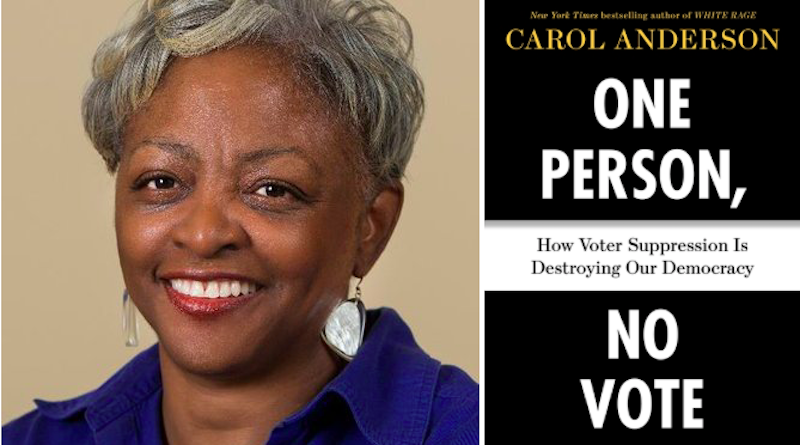
Carol Anderson’s new book, One Person, No Vote, is published this month. She shared her list of seven books on democracy and its challenges with Jane Ciabattari.
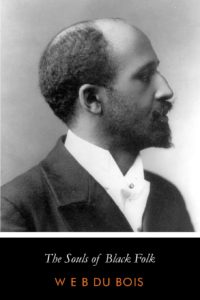
Souls of Black Folks, W.E.B. Du Bois
I read this in college and it hasn’t left me. This was the first time that I had seen articulated so precisely the conundrum of blackness in the United States. “How does it feel to be a problem? The Negro problem.” Du Bois honed in on the complexities of being “both an American and a Negro: two warring ideas. . . in one dark body.” He laid out the jarring reality of “always seeing oneself through the veil.” His work led to the kind of questioning that a vibrant democracy requires. Why are black people supposedly the consistent, persistent problem? Why is being American and black warring ideas, why not complementary, why not reinforcing, why not symbiotic, why incompatible? Why is blackness compared to a whiteness that is identified as American, which would make millions of people, those who can trace their lineage to before the Mayflower, un- or not American? After reading Du Bois, you could never look at this nation the same way.
Jane Ciabattari: Du Bois has had lasting international influence. His comment, “the problem of the twentieth century is the problem of the color-line,” is a classic. But it seems the color line is the problem of the twenty-first century, as well. Why do you think that is?
Carol Anderson: As I laid out in White Rage, African Americans’ attainment of their civil rights has triggered a policy backlash designed to undermine that advancement. The Brown v. Board of Education decision, the gains of the Civil Rights Movement (the Civil Rights Act of 1964, the Voting Rights Act of 1965, etc.), and the election of Barack Obama to the presidency were scuttled, weakened, or trampled on because far too many whites see this society as a zero-sum-game; that the only way African Americans can advance is at the expense of whites. That framing drives policy and embeds the color line in the twenty-first century, as well. For example, since 1964, when President Lyndon Johnson signed the Civil Rights Act, no Democratic candidate for president has received the majority of votes from whites who cast a ballot. Since 1964! The myth of Obama’s election was that we had become a post-racial society. But neither in 2008 nor in 2012 did he receive the majority of votes from whites. Instead, it was an amazing multi-racial coalition that did that. Once, the U.S. Supreme Court gutted the Voting Rights Act in 2013, however, states’ voter suppression laws targeted the members of that coalition—youth, African Americans, Latinos, and Asian Americans and drove their voter turnout rates downward. The results of the presidential election in 2016 are a testament to that. One Person, No Vote shows how public policy, even in the 21st century, can disfranchise based on race but hide behind sanitized language that makes the policy sound reasonable and race neutral—voter fraud, voter ID, maintaining the integrity of the ballot box, voter roll maintenance, etc.
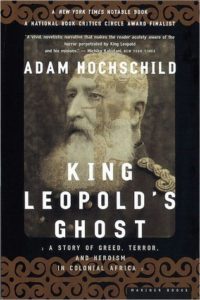
King Leopold’s Ghost, Adam Hochschild
This may seem like an odd addition in a discussion about the problems of democracy. But the themes of exploitation, slavery, greed, and bureaucratic and diplomatic complicity and acquiescence are rife in the debasement of society. Yet, in King Leopold’s Ghost, they eventually run headlong into individual courage, international outrage, Great Power rivalry, and activists using those levers to achieve humanitarian ends. This is a playbook, in so many ways, for the ongoing struggles to secure human rights.
JC: Hochschild called the brutal rule of Leopold from 1885 to 1908 over peoples in the Congo River basin “a death toll of Holocaust dimensions.” And, he noted, Leopold ”never set foot in the Congo. There is something very modern about that, too, as there is about the bomber pilot in the stratosphere . . . who never hears screams or sees shattered homes or torn flesh.” How does that resonate in today’s world?
CA: The Trump regime determined that the best way to terrorize asylum seekers from Central America was to rip their children away from them, destroy the evidence of parentage, and put the babies in cages and kiddie detention centers scattered across the nation with absolutely no plan for reunification. The regime didn’t bat an eye at the inhumanity of this policy. Melania donned a coat with the logo “I really don’t care do u?” Ivanka posted pictures on social media playing with her son while the regime lost track of 1500 immigrant children it had detained and separated from their parents. This is the same kind of callousness that allows Michigan governor Rick Snyder to sell millions of gallons of clean drinking water to Nestle for a mere pittance and still allow Flint residents to go another year with the contaminated water that his disastrous policy created.
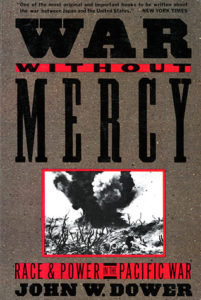
War Without Mercy, John Dower
Dower brilliantly asked what happened when two industrialized powers weaponized their cultural dehumanization of each other as well as their own sense of racial superiority. The result was a kill rate in the Pacific during World War II that far exceeded that in Europe with the Nazis. The films, radio programs, advertisements, music, and more in both the United States and Japan laid the groundwork for a visceral debasement of the other, extermination campaigns, war crimes, and a brutality that destroyed millions of lives. Dower’s is a cautionary tale. Racism destroys. Culture has power.
JC: Like your book White Rage, Dower’s War Without Mercy won a National Book Critics Circle award (in 1986). Dower details the role of propaganda pitting one race against another. In what ways is this happening today?
CA: Trump’s MAGA, backed by the major propaganda phalanx of Breitbart, Infowars, and Fox, is really about a security blanket for demographically frightened whites who want to “take our country back.” He sowed the seeds with his birther claims that questioned the legitimacy of Obama’s presidency because, like during slavery, it questioned the legitimacy of a black man’s birth and citizenship. Already dripping in racism, Trump then launched his campaign declaring that immigration is destroying America because Mexico is sending “rapists” and “criminals”—and the crowd went wild. Trump’s lie then transformed members of the gang MS-13 (which was actually founded in the U.S.) into all immigrants from Central America and Mexico. The president called them “animals.” The majority of Republicans, who are overwhelmingly white, didn’t flinch; they actually support his policy. In Georgia, in fact, the Republican gubernatorial candidates ran ads that outdueled each other demonizing and criminalizing Latino immigrants. When white nationalists and Nazis murdered a young woman in Charlottesville and rampaged through the city, beating protestors, Trump called the white supremacists “very fine people.” Build the Wall. Muslim Ban. It is a regime designed to divide by sowing and nurturing white fears and hatred.
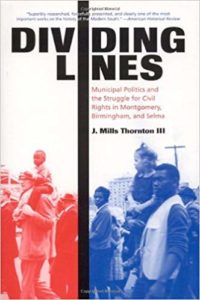
Dividing Lines, Mills Thornton
Some of the most epic battles in the Civil Rights Movement were waged in Alabama. Thornton’s brilliant epic breaks down the monoliths of “white Southerners” and “the black community” and, instead, through Montgomery, Birmingham, and Selma, brings the reader right into the racial, economic, and ideological factions and fissures in the various communities. Democracy is messy. Working to transform it even more so.
JC: Thornton wrote about the history of the South, particularly Alabama, for some fifty years. This book, which gives us a grass-roots perspective on Montgomery, Birmingham, and Selma at a time when small changes on the municipal level could bring larger changes, seems relevant today. As does your look at voter suppression on the local level and the resistance in One Person, No Vote. Can you compare the two?
CA: The underlying oppression and the strategy to take it on were quite similar for the civil rights era and the 2017 battle between Roy Moore and Doug Jones. In each, civil society and those whom the system in Alabama had impoverished, undereducated, and disfranchised fought back. For the 2017 special election, the people knew what life would be like with Roy Moore as senator, a man who pined for the good ol’ days of slavery. They also envisioned what decent funding for education, access to quality healthcare, protection for workers and a living wage could mean for improving their and their families’ lives. None of that could happen with Moore in the Senate. So, they fought. With every tool they had. They organized. They understood the cultural importance of one-on-one communication. They knew the ins-and-outs of the law, its weaknesses, its strengths and then they deployed it. They drew upon the communal strengths of the churches and historically black colleges. They deployed strategies that were tailor made for their neighborhoods, towns, and cities. They crafted a succinct and powerful message that brought in outside resources to sustain the local fight. They understood that while their blackness had made them a target, this was not a black only battle. There were whites who were willing and able to be allies, who also understood what was at stake.
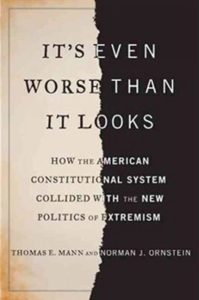
It’s Even Worse Than it Looks, Norman Ornstein and Thomas Mann
I walked away from this book as if I had seen a horror film. A party that has been around since the 1850’s has gone off the rails but still has the cloak of respectability that gives the appearance of regular governance; but it had changed like Invasion of the Body Snatchers: Dramatically, fundamentally, and in the most unsettling ways. Under Newt Gingrich’s direction and strategy, the Republicans were no longer interested in governing, compromise, or even democracy. The point was power and to maintain it all costs. That required hijacking, undermining, and sabotaging the federal government. Seeing the strategy operationalized makes clear why trying to treat the GOP and Democrats as equivalent in outlook, style, and belief in governing, is dangerous. One is a party, one is a saboteur.
JC: The authors write that the Republicans “have become more loyal to party than to country,” so “the political system has become grievously hobbled at a time when the country faces unusually serious problems and grave threats. . . . The country is squandering its economic future and putting itself at risk because of an inability to govern effectively.” This is in 2010. And where do we stand now?
CA: We have Donald Trump. We also have a Republican majority in Congress that, despite overwhelming evidence of corruption and conspiracy, has failed to uphold its Constitutional responsibilities and investigate thoroughly documented abuse of power and criminal activity in the presidency. For example, Devin Nunes (R-CA) sabotaged his own hearing, manufactured a scandal to try to discredit the FBI and the Special Counsel’s investigation, and then, behind closed doors confessed that Trump’s actions (getting stolen emails from a foreign power and using them to sabotage a political opponent) are criminal. What he said from there shows how deeply and badly the Republicans have fallen. Nunes explained that the GOP had to use its power in Congress not to uphold the law. Not to secure our elections from foreign interference. Not to protect the United States. But to shield the president, whose actions Nunes admits are criminal. That’s where we stand.
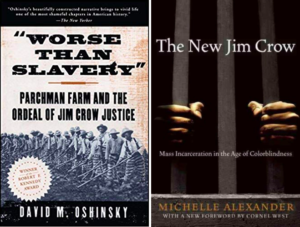
Worse than Slavery, David Oshinsky and The New Jim Crow, Michelle Alexander
From the rise of Jim Crow (Oshinsky) to its new incarnation (Alexander) there is a horrific tale, laid out in painful detail, of how blackness was criminalized and how that was then legitimized through a justice system that was not about justice at all. The implications for democracy are harrowing in terms of the contaminating of one of the pillars of “fairness” in society by operationalizing racism, degrading citizenship through incarceration and disfranchisement, and destroying lives, families, and communities.
JC: And the “Jim Crow” aspect of our culture continues. In One Person, No Vote, you describe a system of racial discrimination dictated by the government in its voter suppression laws. How does the resistance work?
CA: The resistance is based on the ideals—not the reality—of America. They fuel hope, which many underestimate. The resistance doesn’t. The founding principles of justice, equality, and democracy have driven the quest for a “more perfect Union.” That is what fueled Frederick Douglass and the abolitionists. That is what drove civil rights activists to take on Jim Crow. And, that is the catalyst for #TheResistance now as it confronts the racism, xenophobia, misogyny, and homophobia unleashed, unfettered, and unhampered by the Trump regime.

